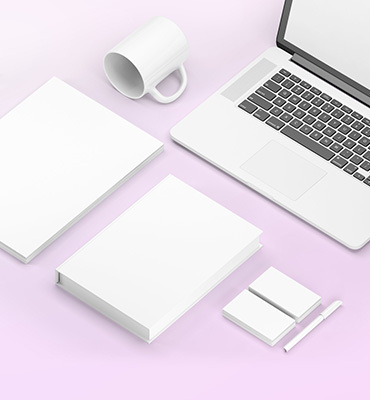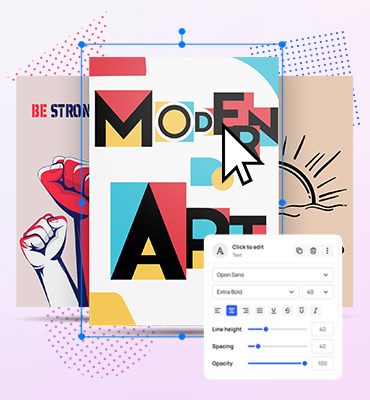Creativity Conversations: Helen Kokk

How Helen Kokk, award-winning product designer, uses a designer approach to lead her decision-making — at work and in life.
There’s an undeniable energy that Helen Kokk brings into a room. Her confidence and drive make it obvious that she’s a professional, while her friendly demeanor creates a comfortable environment to ask questions. In other words, the perfect setup to have her sit down with us for a conversation on our podcast — Creativity On Air.
Helen Kokk is an award-winning product design director who is passionate about centering user experiences and has a love for teaching others to do the same. She spent a significant amount of time innovating at Nortal, mentors with Garage48, and has traveled around the world all thanks to her design philosophy.
We sat down to find out more about her experience and approach. Read on!
Helen, thank you for joining us today. Take us through your journey in the design field.
Usually, when somebody asks me this question, I need to go back to when I was two years old. Because when I was two, I actually grabbed a pencil and started drawing. I drew people — they looked messed up, they had eight legs, the eyes were all over the place. But my parents saw that there’s something to it and put me into an art school. I did preschool for arts, and in high school, I learned art. Then I went on learning more about classical art — painting, sculpting, etc. After that, I hit a breaking point and was determined that I wanted to be an architect.
While that desire has never left, one hot summer I decided to become a graphic designer instead. I found myself in a teeny, tiny design agency that’s still currently operating in Estonia. That’s when I got really experimental. I decided to focus on various things like 3D coding, graphic design, book designs, all of those things. For many years, I did graphics; I designed books, calendars, business cards, you name it. All of a sudden, I found that I needed something more and shifted my focus to small freelance projects. To do so, I needed a space where to work. Nothing big, just a table where somebody would have me.
Luckily enough, I found myself being the first resident of Garage48, a Tallinn startup community-building organization. With that connection, the founders of Garage48 decided to take me everywhere with them to mentor and participate in their hackathon events. We went to Belarus, Georgia, Kyrgyzstan, many places in Europe and elsewhere. They also offered me a challenge in Uganda, where I helped establish the startup ecosystem, from the angle of design. With startups, you always need the aspect of UX and UI. And I really loved this experience, because it was like a boot camp. Everyone — developers and marketers and other people — might ask “why is this blue?”, “why are you choosing this?” or “why is this like this?” It was a constant question of “Why?” This is what steered me into the field of service design.
Eventually, I developed what I call a “Yes” tool. If somebody gives me an interesting project, then my first growth direction is “Yes, let’s do it!” — having the energy to do anything. For example, I really wanted to go to the US. So, I ventured to New York and California, where I stayed a little while, gathered some knowledge, and came back to Estonia. Then, Nortal approached me asking if I’d like to establish the UI/UX disciplines with them. Of course, I decided to say, “Yes, I’m going to take that challenge.” It took me to live in Abu Dhabi for a year and work with projects there. And after five years, I felt that this challenge was completed. Now I’m asking myself, “Where is the next challenge to say ‘Yes’ to?”
An incredible journey so far. Other than accepting challenges and saying “yes”, are there any other aspects driving your decision making?
There are three things. First of all, which I kind of mentioned before, the constant ask of “why?” If anything doesn’t make sense, then I feel that you cannot do it fully or well. So if I can answer this question of “why?”, then it makes sense to move forward with the decision.
Then the second criteria that also goes with any kind of design field is belief. Others can sense if you don’t believe in something. So whatever I choose, I really need people to see the passion in my eyes. That’s the final aspect — passion.
Those are basically the things you need to guide you — the question “why?” needs to be answered, the belief needs to be there, and that brings the passion with it.
What I would say to decision-making is that we shouldn’t look for other people’s confirmation, we should take it as feedback and reflection. Because each and every one of us should have the belief to make the decision. This literally applies to everything. Even if I’m pitching a project, then I need to believe in it so much that I get all the data I need to make a decision. Then I can take full responsibility that this will get us to our end goal.

And how do you go about learning and data gathering, especially when it comes to user data which is pivotal to UX/UI design?
The keyword here is empathy — empathy to everything. When you go to a new project, or you need to find people, you still need to understand their reasoning. As long as you can create empathy around some aspect then that’s how you get tapped into projects and how you can get end users on board.
There’s a story that I also tell in some of my lectures. If I’m working on a project, then the people who are potential users and I need to be neutral towards each other. How do you approach a person we don’t know? Especially here in Estonia, it might be difficult. I found this really cool approach. I own two dogs and started bringing them to cafes with me. It started prompting people to come up to me to talk about the dogs and I was able to ask them questions.
When I was in New York and California, it was rather easy — people approach you easily even to comment on your shoes or clothes. In Abu Dhabi, I learned that it’s also about the small things but in a different sense. It’s a gift-giving culture. For example, if you’re introduced to someone, the first thing you should do is give them a gift — something small like chocolate. That’s a way to also create connection and empathy.
You learn by trial and error; you notice things and observe constantly. It’s definitely one thing I’ve just discussed with my team as well. One common thread that we found about each other is that we’re all people watchers who like to sit in a cafeteria and watch the world go by.
You mentioned earlier that when you’re leading a new project you like to absorb all the information that you need to move forward. Do you have any resources that you really lean on?
I have a lot of resources that I like to use. First comes the basic internet search, of course. But I would say that the most valuable resource at our disposal is the one that we forget the most — our network.
We shouldn’t hesitate to reach out even with basic tools like Instagram, Facebook, or LinkedIn, but make it personal.
For example, I have my own personal advisor and mentors. When you’re in junior positions you usually think about it, but if fades with time. I heavily lean on my grid of advisors. Honestly, I think most of the credit for where I am professionally goes to them. I don’t forget it — when we meet I give them feedback about how this or that action or advice helped to get where I am.
Do you think of your like lectures and helping younger people in their processes as your way of mentoring also?
For sure! The style I give lectures and speeches in is rather inspirational. I never go heavily into a topic with this short time that I’ve been given, whether it’s 25 minutes or two hours. Instead, I try to squeeze in great stories — something that inspires, gives guidance, and provides resources on where to expand on the topic. I’m really glad to see people taking off and then getting to hear about the impact on their success years later.
Putting the spark and then letting everybody else figure out where it takes them — that’s awesome. Is there anything else that we didn’t talk about that you would want to share?
I mentioned how I went into graphic design and not architecture. But architecture has never left me, which is why I’ve been into interior design and I’ve even designed my own house in the south of Estonia. A recent conversation about that led me to the idea that when you’re thinking in a form of architecture, you think in space. That space can relate to other fields and lead to better decisions.
So the last thought I would like to put out there is that don’t get stuck within only UX/UI, or whatever your specialty is — venture to other fields.
We should venture into other fields to make our core skills stronger.
This blog is a condensed and edited version of the full conversation we had with Helen Kokk. If you’d like to hear the rest of her story and insights, listen to the second episode of Creativity of Air: Around the World Experiences with Helen Kokk.
Visualize your design Use a product mockup to showcase your design

Create your design Use our templates to create delightful designs for any medium
